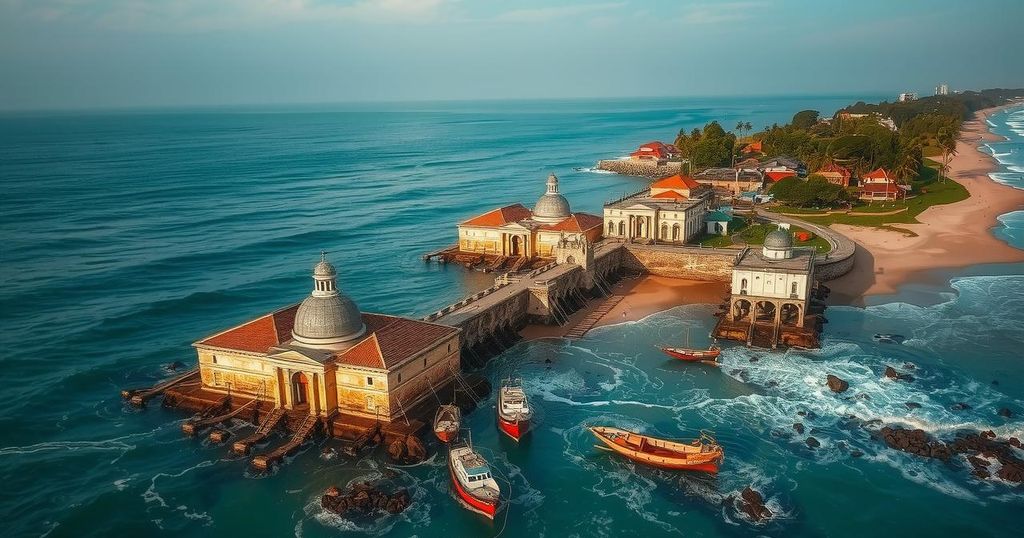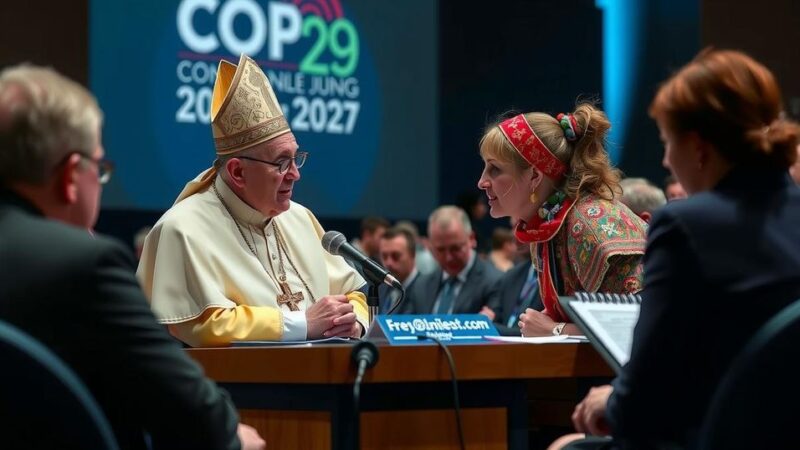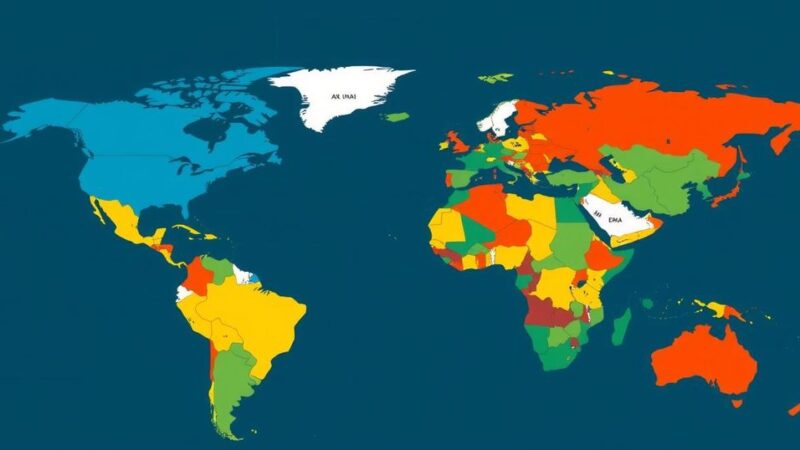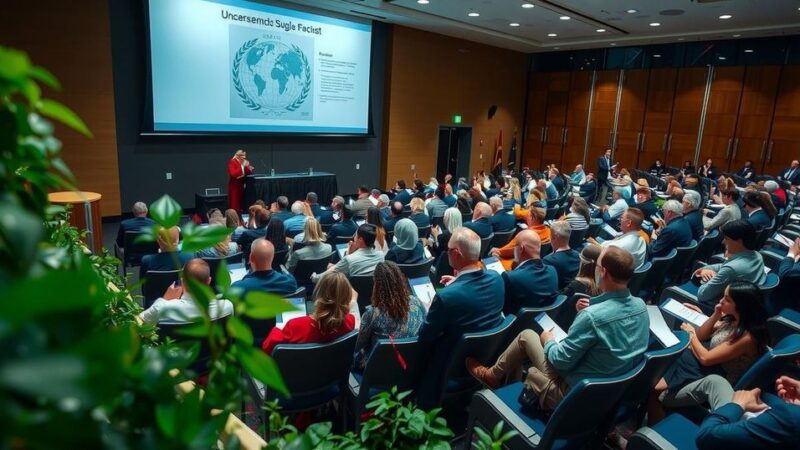Ghana’s historic forts are at risk of obliteration due to serious coastal erosion driven by climate change, with tidal waves from the Atlantic Ocean resulting in substantial losses of coastal land and threatening local communities. Historic sites like Fort Prinzenstein and Fort Kongenstein have experienced significant submersion and destruction, prompting relocation for affected populations. Government interventions, including the construction of defensive barriers and environmental resilience projects, aim to combat these threats.
Ghana’s coastline is experiencing profound losses of historic forts due to intensified tidal waves from the Atlantic Ocean. Over the past decade, coastal erosion has resulted in an alarming average loss of two meters per year, with certain areas facing reductions of up to 17 meters, as reported by the Institute for Environment and Sanitation Studies. This ongoing erosion not only endangers the livelihoods of coastal communities but also significantly threatens the preservation of the country’s historic slave forts and castles. The 240-year-old Fort Prinzenstein in Keta has suffered drastically, with approximately two-thirds of its structure now submerged beneath the ocean. According to the fort’s caretaker, James Ocloo Akorli, “eight of its ten dungeons, originally built to hold enslaved Africans during the trans-Atlantic slave trade, were completely submerged before a sea defense wall was erected to protect what remains of the monument.” Similarly, Fort Kongenstein and Fort Fredensborg have also succumbed to the relentless tides, leaving little trace of their significance. Coastal communities, including Fuveme and Anlo, have faced substantial setbacks due to these climate-induced challenges, prompting relocation efforts for those displaced by the advancing sea. Community member Akorli Simon recounts the devastation, stating, “the Sea began swallowing our community. We were devastated and had to abandon Fuveme in 2016 after a powerful tidal surge washed away the land.” The precarious situation persists in Accra, where many residents have fled their homes in Glefe, reflecting a broader trend across the region. In response to these pressing issues, initiatives such as the Keta Sea Defence Wall, a project backed by the United States Export-Import Bank valued at $94 million, have been implemented alongside the West Africa Coastal Areas Resilience Investment Project, Ghana 2, funded by the World Bank. Minister of Environment, Science, Technology, and Innovation, Ophelia Mensah Hayford, highlighted the importance of these projects, stating, “the $155 million project will be implemented in key areas such as the Korle Lagoon, Densu Basin, and Keta Lagoon. These areas have long faced challenges from tidal waves, flooding, pollution, and erosion.”
The loss of historic forts along Ghana’s coastline is a critical issue resultant from climate change, particularly rising sea levels that exacerbate coastal erosion. These forts, significant cultural and historical landmarks often linked to the slave trade, are now threatened due to the intersection of natural forces and human activities. With Ghana losing an average of two meters of coastline per year, the erosion not only poses a risk to historical sites but also to the livelihoods of communities inhabiting these vulnerable coastal regions. Efforts to combat this issue are ongoing, focusing on both immediate defense mechanisms and longer-term resilience projects to restore these coastal ecosystems.
In conclusion, the gradual destruction of Ghana’s historic forts and the threat to coastal communities signify a pressing challenge exacerbated by climate change and rising sea levels. The government’s initiatives to construct defensive structures and promote resilience through international partnerships reflect an urgent response to protect both cultural heritage and the livelihoods of affected communities. Continued attention and action are necessary to mitigate the effects of coastal erosion and preserve Ghana’s rich history.
Original Source: www.rfi.fr






